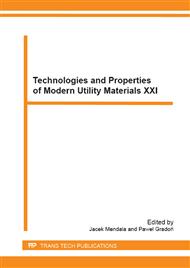p.221
p.225
p.229
p.237
p.243
p.247
p.255
p.259
p.263
Porosity in Turbine Blades Cast into New Shell Moulds Made of SiC Based Ceramics
Abstract:
The subject matter of the paper is the quantitative evaluation of gaseous and shrinkage porosity in the turbine blades using quantitative metallography methods. The research material consisted of blades with a polycrystalline structure made of IN 713C superalloys. Three different shell mould systems were used during the investment casting: shell A - typical industrial shell mould system and used in this work as the reference; shell B – similar to version A, but SiC grit was applied as back-up stucco; shell C – entirely SiC shell mould system. The blades of superalloy IN-713C cast into the wholly SiC shell mould system have revealed much lower porosity as compared to the blades cast into the typical industrial shell mould system.
Info:
Periodical:
Pages:
255-258
Citation:
Online since:
December 2013
Authors:
Price:
Сopyright:
© 2014 Trans Tech Publications Ltd. All Rights Reserved
Share:
Citation:


